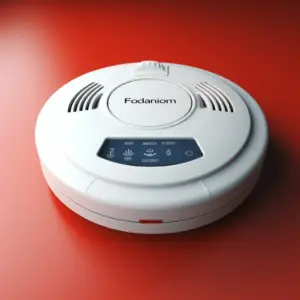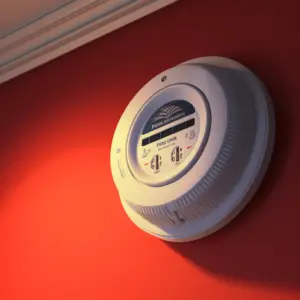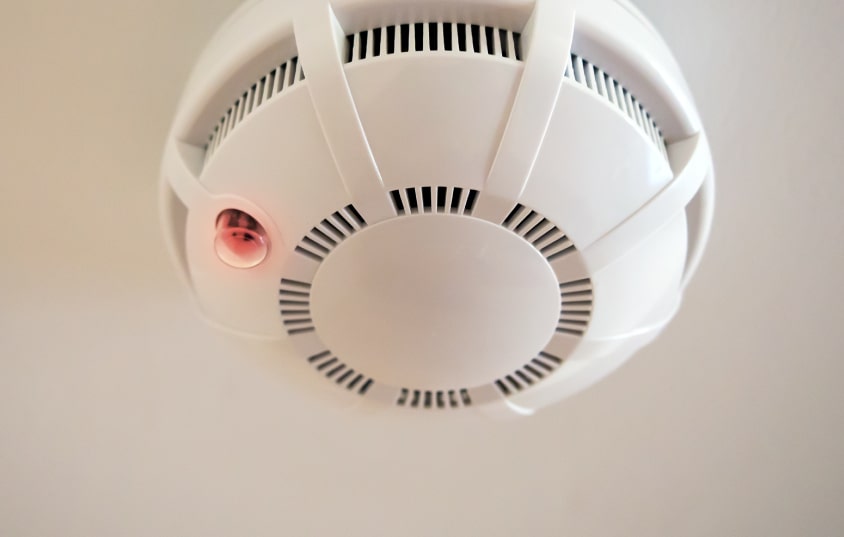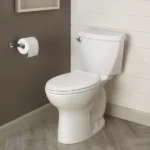Carbon monoxide detectors are important devices that can save your life and even the lives of your friends, family members, and pets. However, sometimes these devices tend to go off even when there are no carbon monoxide or appliance malfunctions present in the atmosphere.
Imagine waking up to the sound of your carbon monoxide detector going off in the middle of the night, only to find out that there is no real danger. It’s an incredibly inconvenient situation, and you might even think that you’re having a nightmare.
Most people just assume their carbon monoxide detectors are going off because their gas appliances are malfunctioning. But that’s not always the case. That’s why we developed this article to help you learn about these devices and the steps you need to take to tackle this problem.
Table of Contents
Carbon Monoxide Detector Going Off But No Gas Appliances: What Could be Off?

Despite the fact that running appliances in a home are a major source of indoor air pollution, there could be a few different explanations for why your carbon monoxide detector goes off even when you don’t have any gas appliances in your home.
Fading Battery
A fading battery is one of the most common reasons for a carbon detector acting strange. The battery may be designed to last a long time, but Quick-Drying Tile Mortar Installation important to pay attention to it after the first six months.
Consider having a semi-annual schedule to inspect the battery and check whether there’s the need to change before it starts to beep. You don’t want to rush changing the battery when the carbon monoxide detector starts beeping.
Faulty Detector
Check if your carbon monoxide detector is old or damaged as this is another reason why your detector could be going off randomly. You should check to see whether or not the device has been changed in a while. If it hasn’t, this might be a major reason for it to start acting erratically.
Cold Room
Think about the temperature in the room where your carbon monoxide is installed. Note that the temperature plays a significant role in how the detector works. Although these devices are designed to serve all year round, that doesn’t mean they can handle erratic temperature fluctuations during the day.
For instance, if it gets too cold inside, then your detector may end up working unexpectedly. So it is important to regulate the temperature on that particular part of your home or property.
Other Sources for Carbon Monoxide
It’s good to understand that indoor appliances are not the only reason for carbon monoxide. If the detector is beeping randomly, then it’s highly recommended you evacuate as soon as possible.
Try not to delay as this can be harmful to your life and other people in the house. Carbon monoxide can also result from other sources like wood, coal, and charcoal.
How to Tell If You Have a Gas Leak
If you suspect you may have a gas leak, it’s important to take quick action to determine whether or not there is an issue. Here are a few ways you can tell if you have a gas leak:
First, you may smell gas. This is often the first sign that there may be a gas leak. If you smell gas, that’s a pretty clear sign that there’s a problem. You might also see a hissing or whistling sound coming from the area where the leak is.
You may hear a hissing or whistling noise. This can be an indication that gas is escaping from a pipe or appliance. You may also see a flame or spark. If you see an open flame or spark near a gas appliance or line, this could be a sign of a gas leak.
Another way to tell is if you see dead or dying vegetation around the area – gas leaks can kill plants. If you see any of these signs, it’s important to call a professional to come and check it out.
If you notice any of these signs, it’s important to take action right away. You can call your gas company to have them come and check for a gas leak.
You should also open all the doors and windows in your home to ventilate the area. Do not turn any lights on or off, and do not use any appliances or electronics until the gas company has determined it is safe to do so.
How to test a carbon monoxide detector

It is also a good idea to test the detector periodically; even if there have been no incidents of carbon monoxide in the home. This will help to ensure that the detector is working properly and will be able to detect carbon monoxide if it ever is present in the home.
To test a carbon monoxide detector, you will need a carbon monoxide source. You can purchase a carbon monoxide detector tester, or use a small piece of burning charcoal.
Place the carbon monoxide source near the detector, and wait for the alarm to sound. If the alarm does not sound, the detector may be defective and should be replaced.
How to Fix a Beeping Carbon Monoxide Detector?
There are a few things that you can do to fix a beeping carbon monoxide detector. First, check the batteries. If the batteries are low, replace them with new ones. If the detector is still beeping, you may need to reset it. Consult the manufacturer’s instructions to see how to properly reset your particular model.
If the detector continues to beep after you have replaced the batteries and reset it, there may be something wrong with the detector itself. In this case, you should contact the manufacturer for further instructions.
Do not ignore a beeping carbon monoxide detector, as it could be a matter of life and death. Whether it s a false alarm or not, it is always important to take action immediately to avoid the risk of carbon monoxide exposure.
It believe there may be a carbon monoxide leak in your home, open all the doors and windows to ventilate the area. Then, call a qualified technician to come and inspect your home or service the appliance. Do not try to fix the problem yourself.


